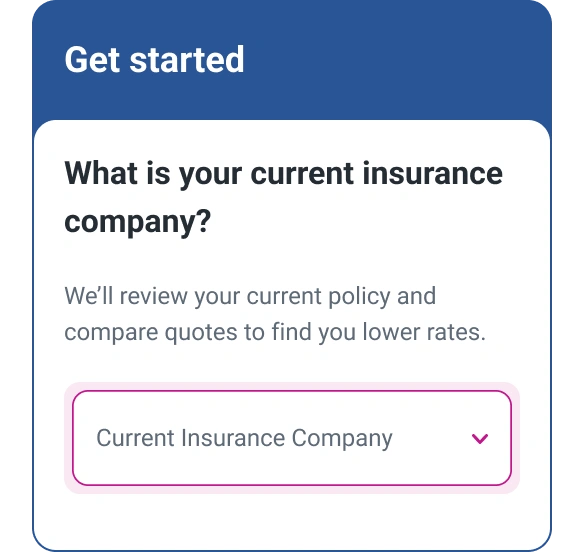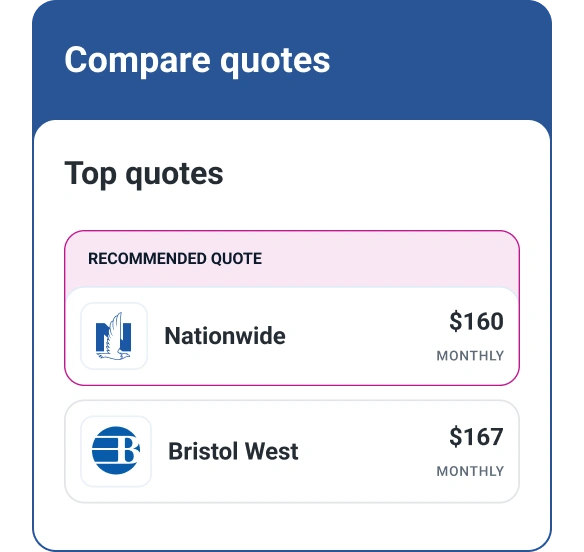What Kind of Insurance Does a Motorcycle Need?

Riding a motorcycle provides a great feeling of freedom, but with it comes responsibility—including insurance.
Minimum motorcycle insurance requirements vary from state to state, but almost every state at least mandates carrying liability coverage. Here's what you need to know about the different types of motorcycle insurance, how to buy motorcycle coverage and how to save money on your policy.
How Much Motorcycle Insurance Is Mandatory?
Requirements for motorcycle insurance differ depending on where you live, but every state except Florida requires motorcycle riders to carry some amount of insurance. In states that do require motorcycle insurance, you must show proof of coverage when you register your ride. It's illegal to ride without insurance and registration, and the penalty for doing so could cost you in both fines and future insurance hikes.
In each state that requires motorcycle coverage, a minimum level of liability insurance is standard. Liability insurance covers bodily injury and property damage that you, as a motorcycle rider, cause in an accident. It does not, however, cover your injuries or any damage to your motorcycle.
The amount of coverage you'll need can vary. In California, for instance, a motorcyclist must carry at least $15,000 in coverage for the bodily injury or death of one person in an accident, $30,000 in coverage for bodily injury or death of at least two people in an accident and $5,000 in property coverage. On a policy, you'll typically see this listed as 15/30/5. But in Texas, those coverage minimums are 30/60/25 ($30,000 for the bodily injury or death of one person in an accident, $60,000 for injury or death of at least two people in an accident and $25,000 in property coverage).
What Are the Types of Motorcycle Insurance Coverage?
While liability insurance is standard for motorcycle insurance, other types of coverage are available and generally are optional. They include:
- Collision insurance: This covers your motorcycle if it's damaged in a collision with another vehicle or an object (a tree, for instance). This coverage pays to repair damage to your motorcycle or replace your bike. If you leased your motorcycle or are still paying back the loan on it, the lender or lease provider might require you to carry collision coverage.
- Comprehensive coverage: This pays for damage caused by something other than a collision, such as fire or theft. Like collision coverage, comprehensive coverage might be required by a lender or lease provider.
- Coverage for custom parts: In some cases, comprehensive or collision coverage will pay only for parts that the manufacturer installed. So if you add accessories such as custom paint or upgraded engine components, regular coverage might not pay for fixing or replacing these add-ons.
- Medical payments coverage: This part of a policy pays medical bills when you, the rider, suffer injuries in an accident. This coverage kicks in no matter who's at fault in the accident.
- Personal injury protection (PIP): In some states, motorcycle insurers offer personal injury protection, known as PIP. It's similar to medical payments coverage, but its benefits are broader. If you're injured in a motorcycle accident, PIP might cover lost wages, child care expenses or funeral costs.
- Uninsured/underinsured motorist coverage: This pays for harm to you or your property when another motorist lacks insurance altogether (uninsured) or lacks adequate insurance (underinsured). It might also cover medical bills, lost wages and property damage.
Beyond those types of coverage, you might able to add:
- Total loss coverage: If your motorcycle is totaled, this coverage helps pay for another bike.
- Roadside assistance: This coverage pays for things like jump-starting your battery or towing your motorcycle when it breaks down on the road.
- Motorcycle repair insurance: With this coverage, also known as mechanical breakdown coverage, you're reimbursed for certain repairs to your motorcycle, such as work on the brake or transmission systems. This coverage is similar to a car warranty.
- Personal belongings insurance: This covers possessions that you carry with you, such as phones, tools or motorcycle gear, when they're damaged, lost or stolen.
What Do Motorcycle Insurers Look at to Determine Costs?
Companies consider various factors when you're deciding whether to cover your motorcycle, and the premium to charge if they do. Among them are:
- Age: For the most part, your premium will go down as you get older and more experienced as a rider.
- Driving record: Do you have speeding tickets, traffic violations or accidents in your driving history? If so, you might be charged a higher rate. Your driving record can be an indication of future behavior, and insurers like to see a spotless record.
- Location: You might pay more for coverage if you live in a warm climate with a longer motorcycle-riding season than in a cold climate with a shorter motorcycle-riding season.
- Type and style of the motorcycle: You might pay more for coverage if you've got a high-performance sportbike versus a lumbering cruiser.
- Age of the motorcycle: A new motorcycle normally costs more to insure than an older motorcycle. Why? One of the reasons is that if your bike is damaged, parts for a new motorcycle typically are more expensive than parts for an older motorcycle.
- Annual mileage: The more miles you log, the more your policy might cost. If you use your motorcycle for commuting to and from work, you're likely to pay more for coverage. If you're more of a weekend road warrior, however, you might pay less.
How to Get Motorcycle Insurance
Many auto insurance companies offer motorcycle coverage. These include Allstate, GEICO, Liberty Mutual, Nationwide, Progressive and State Farm.
When you're comparing quotes for motorcycle insurance from these companies or any others, be sure to study quotes for similar coverage, deductibles and limits. Also, make sure you're aware of the insurance requirements in your state and, if you have a lease or loan, the insurance requirements of your lender.
To get the best deal, shop around and get quotes from several insurers.
How to Save on Motorcycle Insurance
When you're looking for motorcycle insurance, don't overlook discounts. Here are six discounts that you should inquire about:
- Training discount: You might be able to lower your premium if you've completed a motorcycle safety course.
- Multiple-bike discount: If you own two or more motorcycles, you might qualify for a rate reduction.
- Multi-policy discount: A number of insurers extend discounts to customers who buy several policies from them, such as motorcycle, car and home insurance.
- Membership discount: You could qualify for a discount if you, for example, are a member of the military, belong to a vocational association or bank with a credit union. An insurance company may even discount your rates if you're employed by a partner company.
- New customer discount: Some insurers offer a discount when you switch to them from one of their competitors.
- Good driver discount: If you've gone years with an accident, an insurer might lower your premium.
Discounts aren't the only avenue for saving money on motorcycle insurance, though. Here are a few other ways to save:
- Shop around. Getting quotes from several insurers could wind up putting more money in your pocket in the form of lower premiums. That's because each insurer uses its own formula for setting rates. Insurance companies may view your situation differently and grant you lower rates accordingly.
- Raise your deductible. If you increase your deductible from, say, $500 to $1,000, you might be able to trim your insurance costs by hundreds of dollars a year. Keep in mind, though, that if you bump up your deductible, you might need to have more cash on hand in case you file a claim.
- Strip down your coverage. Consider buying only the minimum amount of insurance required, such as liability coverage. Doing this can also end up costing you if you file a claim in the future.
Enjoy the Ride
Buying and riding a motorcycle can be a blast in your time off, or provide efficient transportation if you commute. Just remember that in almost every state, you must maintain a minimum amount of insurance for your motorcycle. And when you're shopping for motorcycle insurance, be sure to explore all of your coverage options, check into discounts and shop around for the best rates so insuring your ride doesn't blast through your budget.
Don’t overpay for auto insurance
If you’re looking for ways to cut back on monthly costs, it could be a good idea to see if you can save on your auto insurance.
Find savingsAbout the author
John Egan is a freelance writer, editor and content marketing strategist in Austin, Texas. His work has been published by outlets such as CreditCards.com, Bankrate, Credit Karma, LendingTree, PolicyGenius, HuffPost, National Real Estate Investor and Urban Land.
Read more from John

